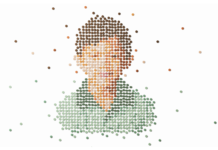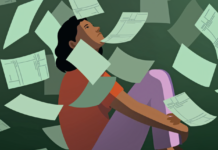On the Australian website Arena.org.au, psychologist David Ferraro has this long and searing analysis of family suffering during the pandemic, and the problems with society, politics, psychiatric labeling, and widespread practices and belief systems that predated it and continue still:
“For children and young people, the evidence just prior to COVID-19 showed a marked increase in subjective suffering. By 2019, the largest cohort of people seeking emergency mental health support was that aged between 18 and 24, and suicide was the leading cause of death for those aged between 15 and 24. In 2018, a report tells us, 24.2 per cent of young people experienced mental distress, up from 18.7 per cent in 2012. The ‘experts’ are ‘unclear’ as to why. I have some ideas. After decades of austerity and growing inequality, the destruction of most forms of collective and working-class power, the subordination of familial bonds and social relations to the imperatives of capital, a life in which both bodily enjoyments and discipline and surveillance are mediated by omnipresent digital technology and a future which promises misery and premature death, one has to be a ‘mental health expert’ to have no idea what is going on. . . .
[During the pandemic, adults were] expected to work from home at the same time as any children in their care are supposed to be being home-schooled. . . . The schooling itself is now mediated entirely via devices, and while at the level of content it is still notionally oriented by teachers, it is administered by parents already beleaguered by the demands of their own employment under lockdown.
The child is the symptom of its family, and it can be said that the above-mentioned problems with satisfaction for the parents make family life more symptomatic. This is perhaps most clearly the case in childhood diagnoses of ADHD, which prior to the pandemic were consistently more likely to be attributed to children who were the youngest in their class.v . . . Note that in Australia, virtually the only treatment for ADHD for people of any age is stimulant medication.
Identifying a child as being disordered in their attention and treating this principally as a biochemical problem has the effect of decontextualising the reasons why that child might be struggling with attention, and subtly makes compliance and conformity measures of good mental health. It should be noted in passing that a recent study by the University of Melbourne demonstrated that the effects of ADHD medications on ‘healthy’ individuals in fact impeded performance on a cognitive task, notwithstanding the self-perceptions of those consuming the drugs. A lucrative industry has developed since the pandemic to cater for the vast numbers of people, mostly under forty, self-identifying as ADHD in order to receive prescription stimulants.”
Article → ***
***
More from Around the Web















Psychologist David Ferraro provides a critical analysis of family suffering during the pandemic on Arena.org.au, highlighting pre-existing societal issues and the impact on children’s mental health. He emphasizes the challenges faced by parents juggling work and homeschooling, questions the decontextualization of childhood ADHD diagnoses, and notes a concerning rise in self-identifications for ADHD medication post-pandemic.
Report comment